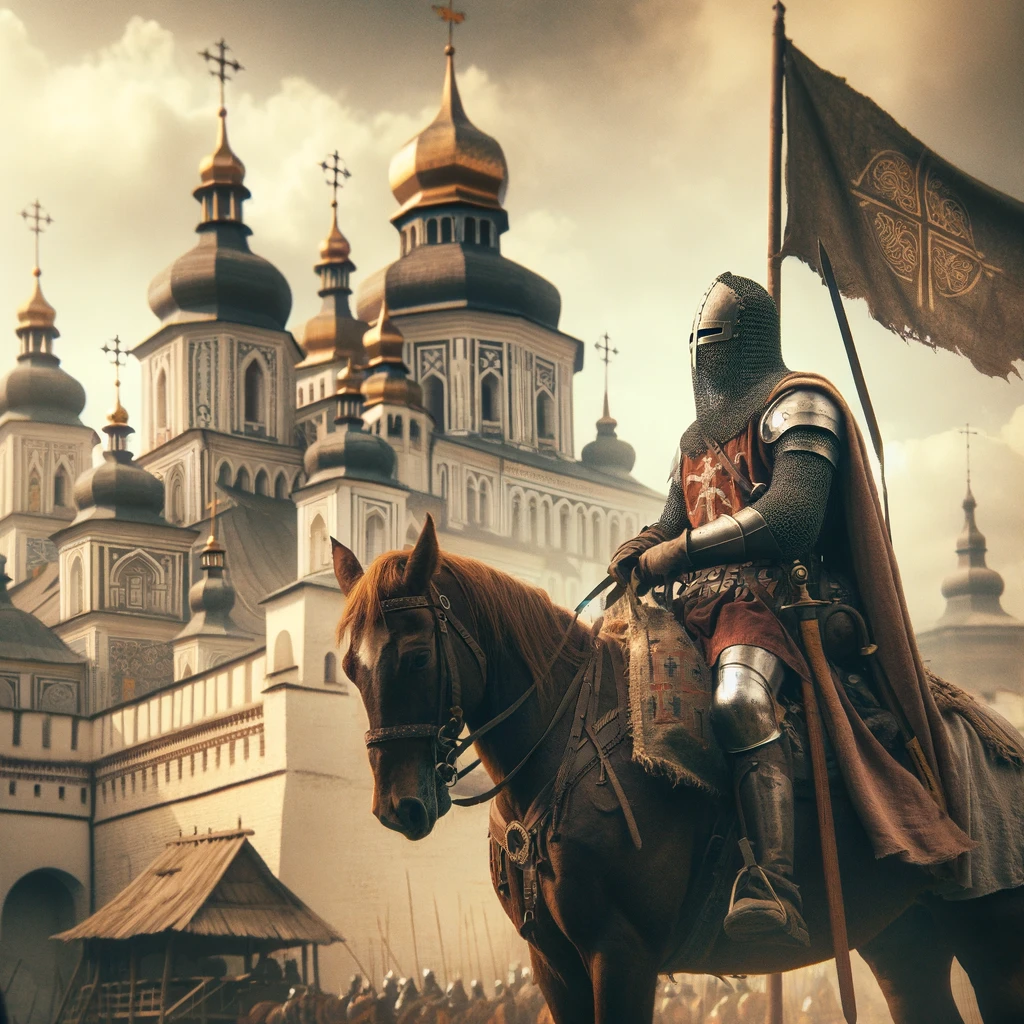
Sviatoslav I of Kiev, a figure shrouded in the mists of time, stands as a testament to the power and complexity of medieval Eastern Europe. His reign marked a pivotal era in the history of the Kievan Rus, leaving a legacy that has fascinated historians and enthusiasts alike. Here are 15 intriguing facts about this formidable ruler and conqueror of lands.
Early Life and Rise to Power
Born in the early 940s, Sviatoslav was the son of Igor of Kiev and Olga of Kiev. Unlike his Christianized mother, Sviatoslav remained a pagan throughout his life. His early years were marked by his mother’s regency, during which she significantly strengthened the Kievan state. Sviatoslav emerged on the historical stage as a warrior prince, eager to expand his territories and assert his dominance.
Military Campaigns and Conquests
Sviatoslav’s military campaigns were ambitious and far-reaching. He is renowned for his expeditions against the Khazars, effectively dismantling their power and eradicating their Khaganate from the pages of history. His conquests extended to the Volga Bulgars, and even the Eastern Roman Empire felt the pressure of his military campaigns.
Innovations in Warfare
A strategic innovator, Sviatoslav introduced several military reforms that enhanced the mobility and effectiveness of his army. He preferred swift, mobile units of warriors, transitioning away from the heavily fortified settlements that had previously characterized the defense strategies of the Kievan Rus. His approach to warfare emphasized speed and surprise, setting a precedent for future military tactics in the region.
Appearance and Personality
Byzantine sources, particularly those of Emperor Constantine VII, provide vivid descriptions of Sviatoslav’s appearance and personality. Notably, he was described as having a shaved head and a single lock of hair, a tradition among the Varangian warriors. His disdain for Byzantine luxury and preference for simplicity reflected his pragmatic and martial nature.
The Capture of Pereyaslavets
One of Sviatoslav’s notable achievements was the capture of Pereyaslavets in what is now Romania. He declared it “the key to all Bulgaria“ and planned to establish it as his capital. This move was indicative of his strategic foresight, recognizing the importance of controlling the Danube for trade and military purposes.
Relations with the Byzantine Empire
Sviatoslav’s ambitions eventually led him into conflict with the Byzantine Empire, culminating in the Rus’-Byzantine War of 970-971. Despite initial successes, his forces were ultimately defeated, showcasing the challenges of sustaining long-distance campaigns in the face of determined resistance and strategic counterattacks.
Death and Legacy
Sviatoslav met his end in 972, ambushed by Pecheneg forces while returning to Kiev. His death marked the end of an era, but his legacy endured. His conquests reshaped the geopolitical landscape of Eastern Europe, setting the stage for the future emergence of the Russian and Ukrainian states.
Sviatoslav’s reign exemplifies the volatile nature of medieval Eastern European politics, characterized by relentless expansion, strategic innovation, and the indelible impact of individual leadership. His story, a blend of ambition, warfare, and the quest for power, continues to captivate those interested in the complexities of history and the enduring legacy of the Kievan Rus.
In reflecting on the life of Sviatoslav I of Kiev, we gain insights into the broader narratives of medieval history, the evolution of warfare, and the intricate tapestry of human endeavor. His life reminds us of the transformative power of leadership and the unpredictable course of history, where the ambitions of a single ruler can alter the destiny of nations.



